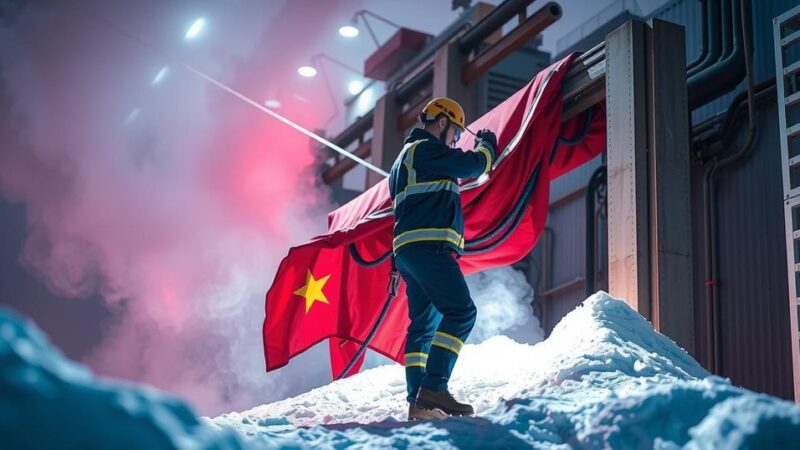The world faces a potential massive volcanic eruption akin to Mount Tambora, with scientists predicting a 1-in-6 chance of occurrence this century. Climate change may exacerbate the effects of such an event, making preparation crucial for nations, particularly those near active volcanoes. Historical data shows significant climate impacts from eruptions, highlighting the need for urgent action to mitigate risks.
The world may soon face another significant volcanic eruption, similar to the catastrophic event of Mount Tambora in 1815. This eruption not only demonstrated the potential for immense destruction but also significantly impacted global climate, resulting in widespread crop failures and a cholera pandemic. According to climate experts, we are now presented with a 1-in-6 chance of witnessing a comparable massive eruption this century. Climate change further complicates this scenario; a warmer Earth could amplify the cooling consequences of volcanic activity, with more profound and unpredictable effects on weather patterns, food security, and human habitation.
When major volcanoes erupt, they emit sulfur dioxide and aerosols into the atmosphere, altering the climate by deflecting sunlight and cooling the planet. Historical evidence indicates that past eruptions have led to a temporary drop in global temperatures ranging from 1 to 1.5 degrees Celsius. However, the forthcoming eruption would occur in a significantly altered environmental context, where millions live in close proximity to active volcanoes, increasing the potential for widespread devastation.
Scientific assessments indicate the need for advanced preparations to mitigate the potential impact of future eruptions. Currently, many nations lack comprehensive strategies for dealing with such disasters and their aftermath. Vulnerable regions, especially around populous volcanically active areas, face serious threats from imminent eruptions, which could lead to catastrophic consequences for food production and societal stability. Ultimately, while the probability may appear minimal, the global community remains largely unprepared for the significant upheaval that could ensue from a future volcanic event.
Throughout history, volcanic eruptions have had profound effects on human society and global climate. The eruption of Mount Tambora in 1815 serves as a prominent example, leading to significant environmental and social disruptions. The current discussion focuses on the potential for future eruptions, particularly given the backdrop of climate change, which could compound the effects of volcanic activity. Scientists have warned that the planet may be at risk of experiencing another massive eruption within the next century, highlighting the urgent need to consider modern advancements in climate science and the associated risks of such geological events.
In summary, the potential for a monumental volcanic eruption poses an urgent risk to global stability and necessitates a comprehensive response strategy. Climate experts urge the development of contingency plans for potential disasters stemming from volcanic activity, especially in light of the accelerating impacts of climate change. As history has shown, the consequences of such eruptions can be dire, ranging from immediate devastation to long-term global climate shifts. Therefore, it is imperative for policymakers to prioritize this issue and prepare for the unpredictable future that lies ahead.
Original Source: www.cnn.com







